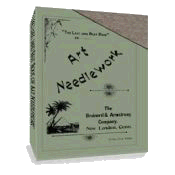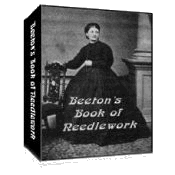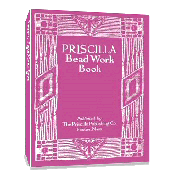Victorian Style Napkins
Victorian style napkins (see examples below) and other table linens come to mind when we think of the Victorian era. Who doesn't envision wonderful tables set for tea, lavishly filled with scones, dainty finger sandwiches and delicious sweets, and accompanied by beautiful napery and silver?
Women of the Victorian era were concerned about setting a beautiful table with fine napery, but like us, many were wanting to beautiful table linens at a reasonable cost. The following is the advice ladies of the era would find:
"Some people think,: I suggested, "that they cannot set a handsome table unless they are rich enough for French china, plenty of silver and the finest damask, but some of the best-looking tables I ever sat at, cost very little money. I'd now our minister's table anywhere I saw it, by some pretty little napkins his wife has; they are laid over the bread, over the cake, over the plate of sandwiches or buns, and thy are the daintiest little things!
She cuts a yard of bird's-eye linen into eight even pieces, fringes out each piece half an inch deep, over-stitches evenly with red working-cotton to keep it from raveling further, and then coral-stitch a border, or works a sheaf of wheat, or her own initial in the corner with red cotton: she says they last or years, and they set off her table wonderfully. She is fond of a centre-piece for her table, and she has a dwarf fern growing in a large conch shell; it is a very charming thing."
…. From Complete Home by Mrs. Julia McNair Wright, prolific author of the late 1800's.
Victorian style napkins are stunning accessories to the luncheon table. Following Mrs. Wright's recommendations you will find that the instructions on this page will be appreciated highly by ladies who take pride in the style of their table linen and toilet mats. It was fashionable to embroider Victorian style napkins or doilies in colored cotton, linen and wash-silks with floral designs, for use with finger bowls or under dishes of fruit or cake, following as nearly as possible the natural colors of blossoms, fruits and leaves.
Figure No. 1 on this page represents a completed doily. After a square of the desired size is cut, the center is worked as shown with any number of appropriate designs available. A few threads are then drawn from each side a short distance from the edge, and the remaining threads are caught by a stout linen thread of the same color, in a hem-stitch design.
A first glance at the representation of this part of the work would no doubt impress the observer with what would seem an impossible arrangement at the corners; but the effect is the result of study to overcome a difficulty experienced in washing napkins and doilies in which the threads have been fully drawn, and an open space left at each corner. The threads are clipped before being drawn, so that they will pull out only the length of the hem-stitched border at each side as illustrated. The threads that would pull out at the corners if left unsecured are firmly overcast by a linen thread of the same color, or with their own ends, which may be drawn for the purpose, from one corner to the other at the same side before they are clipped at the opposite corner.
In making these Victorian style napkins or doilies it would be well to experiment on a piece of old material in the manner of drawing and fastening the threads.

Figure No. 2 represents a completed Victorian style napkin. As can be seen, the linen is prepared in the precise manner described above with one exception. The embroidery is placed in one corner of the napkin instead of the center as done on the doily. Both napkins and doilies (often the words were used interchangeably) were used extensively on the table.

White napery embroidered in gold silk is effective and beautiful, and many ladies will select floral designs for the corners of table-cloths, tray-covers, tea-cloths, etc. A set of luncheon Victorian style napkins which is worthy of admiration comprises a cloth and twelve napkins. The cloth has the damask border along its edges, followed by chain stitching done in gold-colored silk, and in each corner is a floral design embroidered in the same color. The napkins are ornamented with drawn-work, and in the corner of each a floral design is worked. Linen embroidery thread, which may be obtained in a variety of colors, is also used for the embellishment of Victorian style napery. In the performance of work of this variety incongruous colors are of course avoided, but the good effect does not depend upon the choice of only those tints which are seen in the natural flowers.
Helps for Fancy Workers.
Appliquéd flowers and foliage, which may be easily attached to the surface that is to be decorated, are much valued by ladies who cannot afford the time to embroider lambrequins, scarves, etc., and yet like to exercise their own taste in the selection of materials, tints, and style of ornamentation. Beautiful Victorian style napkins can be prepared using such items. One note of caution: be aware when making your napkins that the size of the appliqué is approximately the size of an embroidered pattern one would find on a vintage Victorian style napkin. Too large an appliqué could make the napkin difficult to use and too small of design, and your handiwork, would go unnoticed.
Return to Top of page.
Return to Hand Embroidery page.
Return Home from Victorian Style Napkins page.



 433 pages!
433 pages!

